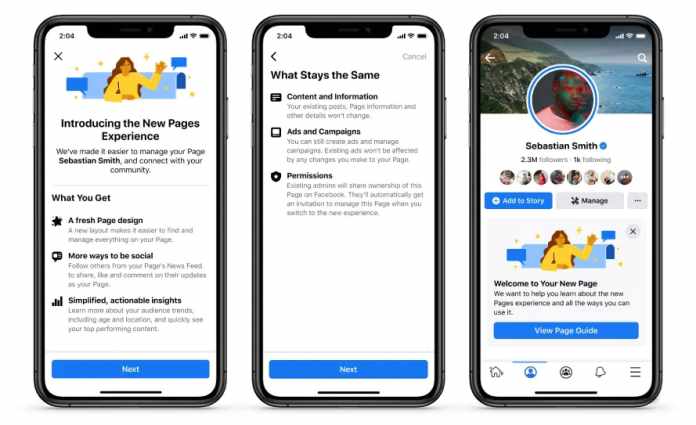Facebook has recently released a reform that allows users to see more information about why that release appears in their own news feed. This functionality has already been used in ads, but in the future, this will also apply to posts from friends, pages, and groups.
Approximately 1,500-15,000 updates are sought for each Facebook user’s news feed, with visibility based on algorithm selection. With the latest reform, we can see more clearly why an update or ad has ended up in our own news feed, and we can define the content of the news feed to better match our own interests.
The news feed algorithm is based on seeing communications from Facebook pages, groups, and friends whose updates we’ve previously committed to and responded to. With different functionalities, Facebook’s algorithm interprets the “closeness” between friendships and the likes and pages. In the future, we will see from the update information the factors and functions that led to the update coming to the news feed. At the same time, we can customize the view of our own news feed.
The update displayed in the Facebook news stream is affected by e.g., the following factors:
- The update was made by a friend or page on your network that you are following.
- How have you reacted and committed in the past?
- how much have you liked, commented on, or shared updates from a friend, group, or business page in the past?
- how well do you engage with similar content (e.g., videos, links, images)?
- how relevant and current are the updates made by that page or user?
How has an advertiser targeted a Facebook ad to appear in my feed?
This “why do I see” functionality has already been used in advertising. The Facebook ad has been able to view the targeting methods used by the advertiser, such as demographics, location, interests, and remarketing, i.e., visits in question. on the advertiser’s site. Learn more: How is the information used to show my ad? The functionality has now been updated, and in the future, we’ll see more details about the data sources used by the advertiser.
Facebook advertising can also be targeted based on customer information, and in the future, we may check whether the advertising company has used customer information (email address, phone number) to target advertising. In the future, the tool will also detect a marketer who misuses email addresses for marketing targeting – in a situation where the party who saw the ad has not made their email address available to the advertiser under any circumstances.
What is a good thing for a marketer to consider?
It’s good for social media marketers to understand how updates appear in a user’s news feed. Facebook is working to make the news feed more open, and this means that as users, we can better define the content of our own news feed and see the targeting methods used by the advertiser.
At this time, we’re able to view running ads on each page from the company’s own page under ‘Information and Ads.’ Facebook also recently released an ad library where you can search for ads by page, topic, or organization >> Facebook Ad Library.
The functionality will arrive to Facebook users in stages over the next few weeks and will not require any separate action from the user.
Brand there, brand here
According to executive of Grizzly New Marketing, a brand is a combo of three: if one of these three fails, the brand is also “destructive”. Instead of buying media space and campaigns, modern marketing is more of a “hands-on” job, communication, and sales and marketing collaboration. With new opportunities and channels, many have jumped over the strategy = days are filled with more tactical measures and strategic, long-term brand awareness has been left out.
The brand and its importance as a prerequisite for effective marketing were discussed in several speeches. In his speech, Jono Anderson shed light on his views on the future of marketing, and his presentation considered whether digital marketing in its current form is already obsolete and are tactical measures useless?
Do we focus too much on individual marketing efforts without an overall picture, brand story, or focus on the customer experience?
Can you answer the questions below?
- What are the company’s main brands / products or services?
- Who are our target groups and to whom is the communication targeted?
- What is the company’s current position in the target market?
- What are the elements of a brand (repetitive visual elements in brand marketing and communication themes to create a brand and image)?
- What are the strategic goals? Is the goal growth or profitability?
Fast results or long-term effects?
Mark’s presentation considered the differences between targeted, tactical marketing and brand marketing. Short-term tactical measures bring short-term results (impact for about six months). These are often digital marketing measures that require (quick) results.
Correspondingly, brand marketing aims at a wider audience and the goal is to build a long-term and unified brand story.





